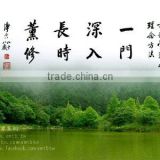Exothermic welding mould
USD $20 - $100 /Piece
Min.Order:1 Piece
Quick Details View All >
Shandong Jiahe Machinery Co., Ltd.
Product Details
Exothermic welding
Welding by exothermic chemical reaction was originally devised in about 1897. In a typical process, an exothermic chemical reaction is achieved with heavy metal oxides, using aluminium as a reducing agent, for example, the reaction between aluminium powder and iron oxide. When ignited, these reactants produce the necessary welding heat within a few seconds. The resultant superheated, molten metal is so hot (between 2500-2960°C for steel) that the contacting surface layers of the substrate or joint melt. These layers, together with the liquid weld metal, coalesce to form a welded joint or clad layer.
Exothermic welding is a commercially established technique for joining steel railway track, reinforcing bar, copper bus bars and earth and lightning conductors. However, combining exothermic chemical reaction with centrifugal force is, to some extent, still novel.
Important current issues in the development of the process are to improve weld quality and extend the range of applications that would benefit from exothermic welding/cladding. For example, possible applications include clad, corrosion resistant line-pipe, wear resistant chutes, digger and cutter wheel fabrication, reclamation of copper chills and military equipment.
The exothermic welding process requires no external power or heat source, making it completely portable. It is regarded as a high-speed deposition process capable of depositing 2 to 10kg of powder in 4-20 seconds respectively. Almost any desired composition of steel can be obtained by introducing the required alloying elements into the exothermic charge. These could be in the form of ferro alloys like ferro-manganese or ferro-chrome. Non-ferrous materials such as copper and nickel alloys can be produced by reduction of the appropriate oxide and aluminium to produce superheated liquid metal.
The exothermic process demands stringent safety precautions and the use of a proprietary exothermic formulation is recommended. Welding operations should be carried out at a safe distance (isolation) or be suitably guarded, with full face mask, gloves and safety clothes being used which are designed for hot metal impact. Fume extraction may be required and welding equipment should also be free of moisture.
Contact Supplier

You May Like

New Products
Popular Searches
Recommended Products
Find Similar Products By Category